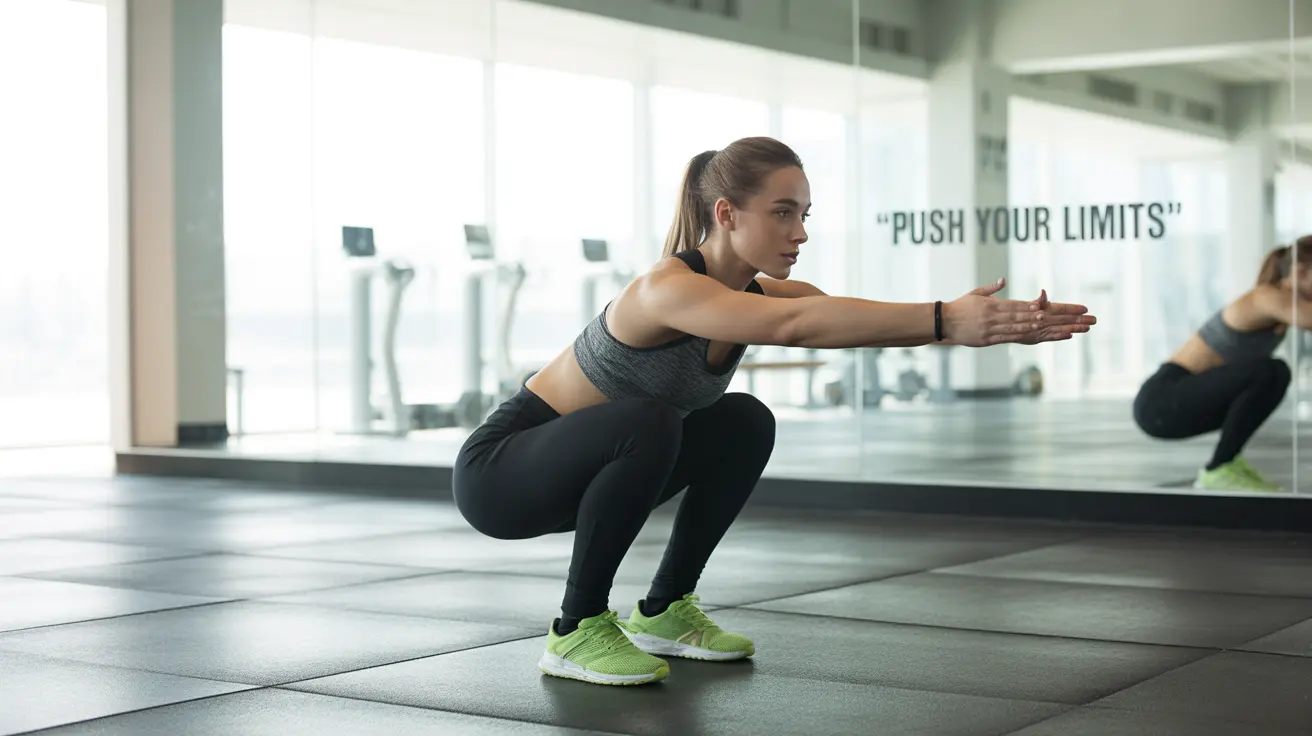Air squats, also known as bodyweight squats, are a fundamental exercise that can transform your fitness journey without requiring any equipment. Whether you're new to exercise or an experienced athlete, mastering this foundational movement pattern is crucial for building strength, improving mobility, and enhancing overall functional fitness.
In this comprehensive guide, we'll explore proper air squat technique, the muscles involved, optimal training frequency, and how to avoid common mistakes. You'll learn why this simple yet effective exercise deserves a place in your workout routine.
Proper Air Squat Form: A Step-by-Step Guide
Mastering proper form is essential for maximizing benefits and preventing injury. Follow these key steps:
Starting Position
- Stand with feet shoulder-width apart
- Point toes slightly outward (about 15-30 degrees)
- Keep chest up and core engaged
- Arms extended forward or at your sides
The Movement
- Initiate the movement by hinging at your hips
- Send your hips back as if sitting in a chair
- Keep weight in your heels
- Maintain a neutral spine throughout
- Lower until thighs are parallel to the ground
- Drive through your heels to return to standing
Targeted Muscles and Benefits
Air squats engage multiple muscle groups simultaneously, making them an efficient full-body exercise. The primary muscles targeted include:
- Quadriceps
- Hamstrings
- Glutes
- Core muscles
- Calves
- Lower back muscles
Key Benefits
Regular practice of air squats can lead to numerous fitness improvements:
- Increased lower body strength
- Enhanced core stability
- Better joint mobility
- Improved balance and coordination
- Increased calorie burn
- Greater functional movement capacity
Training Frequency and Programming
The beauty of air squats lies in their versatility and accessibility. Here's how to incorporate them effectively:
For Beginners
- Start with 2-3 sets of 10-15 repetitions
- Practice 3-4 times per week
- Focus on form rather than quantity
- Rest 1-2 minutes between sets
For Advanced Practitioners
- Perform 3-5 sets of 20-30 repetitions
- Include in daily warm-ups
- Add variations like pulse squats or jump squats
- Incorporate into circuit training
Common Mistakes to Avoid
Watch out for these frequent errors that can reduce effectiveness and increase injury risk:
- Letting knees cave inward
- Rising onto toes
- Rounding the back
- Not reaching proper depth
- Looking down instead of forward
- Moving too quickly
Frequently Asked Questions
How do you perform an air squat with proper form to avoid injury?
To perform an air squat safely, stand with feet shoulder-width apart, keep your chest up, and lower your body by pushing your hips back while keeping your weight in your heels. Maintain a neutral spine, and ensure your knees track over your toes. Lower until your thighs are parallel to the ground, then push through your heels to return to standing.
What muscles do air squats target and how do they benefit overall fitness?
Air squats primarily target the quadriceps, hamstrings, glutes, and core muscles. They improve lower body strength, enhance mobility, boost cardiovascular fitness, and develop better functional movement patterns for daily activities.
How often should I do air squats to improve strength and mobility?
For optimal results, perform air squats 3-4 times per week, allowing at least one day of rest between sessions. Beginners should start with 2-3 sets of 10-15 repetitions, while advanced practitioners can do 3-5 sets of 20-30 repetitions.
What are the most common mistakes to avoid when doing air squats?
Common mistakes include letting knees cave inward, rising onto toes, rounding the back, not reaching proper depth, and rushing through the movement. Focus on maintaining proper form and control throughout the exercise.
Can air squats help improve balance and posture without using weights?
Yes, air squats effectively improve balance and posture by strengthening core muscles, developing proprioception, and promoting proper alignment. Regular practice helps establish better movement patterns and body awareness, leading to improved overall posture and stability.




